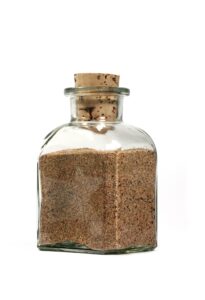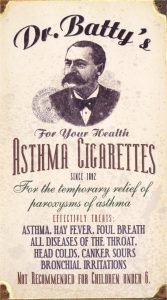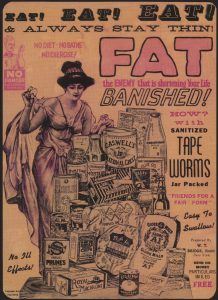 Sir John Hill (the “Sir” came from a Swedish title) started out as an apothecary and also tried his hand at acting before becoming a prolific writer. He edited the British Magazine from 1746-50 and produced a huge variety of works including plays, advice on marriage and child-rearing (under the pen-name The Hon. Juliana-Susannah Seymour), scientific treatises and botanical books. The best-known of these was the 26-volume The Vegetable System – or, to give its full title, The Vegetable System, or, a Series of Experiments, and Observations tending to explain the Internal Structure, and the Life of Plants; their growth, and Propagation; the Number, Proportion, and Disposition of their Constituent Parts; with the True Course of their Juices; the Formation of the Embryo, the Construction of the Seed, and the Encrease from that State to Perfection.
Sir John Hill (the “Sir” came from a Swedish title) started out as an apothecary and also tried his hand at acting before becoming a prolific writer. He edited the British Magazine from 1746-50 and produced a huge variety of works including plays, advice on marriage and child-rearing (under the pen-name The Hon. Juliana-Susannah Seymour), scientific treatises and botanical books. The best-known of these was the 26-volume The Vegetable System – or, to give its full title, The Vegetable System, or, a Series of Experiments, and Observations tending to explain the Internal Structure, and the Life of Plants; their growth, and Propagation; the Number, Proportion, and Disposition of their Constituent Parts; with the True Course of their Juices; the Formation of the Embryo, the Construction of the Seed, and the Encrease from that State to Perfection.
Hill, who had a genuine medical degree, started producing patent remedies when the expense of publishing his writing began to take its toll, and the ploy worked, earning him a considerable fortune. According to Thomas Graham in Modern Domestic Medicine (1827), the ingredients of the Pectoral Balsam were balsam of tolu (a plant resin), opium, honey and spirit of wine. Quackish or not, it sounds a darn sight better than Lemsip to me.
.
The Public are most seriously cautioned against
various Counterfeit Preparations of the Genuine PEC-
TORAL BALSAM of HONEY, invented by the late Sir JOHN
HILL, M.D., and now faithfully preprared from his MS. Re-
cipes, by his Relict and Executrix, the Hon. Lady HILL, at
her house in Curzon-street, Berkley-square, London.—More
than 36 years experience has confirmed the unequalled efficacy
and safety of this elegant Medicine in the immediate relief, and
gradual cure, of Coughs, Colds, Sore Throats, Hoarseness,
Difficulty of Breathing, Catarrhs, Asthma, and Consump-
tions; for it is the greatest preserver of the Lungs, and contains
all the healing, softening and soothing qualities of that salubri-
ous extract of flowers called Honey, and the essential parts of
the richest Balsams; it is restorative as Asses Milk, and never
disagrees with the stomach. A large tea-spoonful in a wine
glass of water, is a dose, converting the water into a most
pleasant balsamic liquor, to be taken morning and evening.
A common cold yields to the benign influence of this Medi-
cine in a few hours; and when resorted to before the lungs
are ulcerated, all danger of consumption is certainly prevented.
Such are the faint outlines of the merits of Sir John Hill’s Bal-
sam of Honey, a preparation of most exalted efficacy, the re-
sult of long researches into nature, by the Linnaeus of Britain;
a man who dedicated his life to Botany, and justly sought the
true means of health in the vegetable kingdom; but as the
severest human laws are unequal to the prevention of extreme
fraud by coining and forgery, so it is not to be admired that the
merits of this Medicine have induced base and avaricious men
to vend counterfeit preparations of it, preparations not merely
devoid of all efficacy, but also highly deleterious, whereby
many persons have lost their lives, and others been reduced to
the brink of the grave in a few days time.—Lady Hill desires
that all persons will take notice, that her Balsam of Honey is
only to be had at the original Patent Medicine Warehouse, No.
150, Oxford-street (opposite New Bond-street); E. Newbery,
corner of St. Paul’s; Tutt, Royal Exchange, London; and
Clarke, No. 269, Borough; in bottles, price 3s. 6d. each.—
The Genuine may be known by the Signature “H. Hill,” in
red ink on the label of each bottle.
Source: The Times, Friday 15 April 1796


